So, how do we clean a chimney liner? A well-maintained chimney liner is essential for safe and efficient fireplace or wood stove operation. Over time, creosote and soot can accumulate inside the liner, posing fire hazards and reducing its efficiency. Regular chimney liner cleaning is crucial to ensure your heating system’s safe and optimal performance. In this article, we’ll provide a step-by-step guide on how to clean a chimney liner effectively.
Gather the Necessary Tools and Materials:
Gathering the necessary tools and materials is a crucial first step in preparing for chimney liner cleaning. Let’s elaborate on each item to ensure you understand its importance and how to use it effectively:
Chimney Brush and Rod Kit for cleaning chimney liner
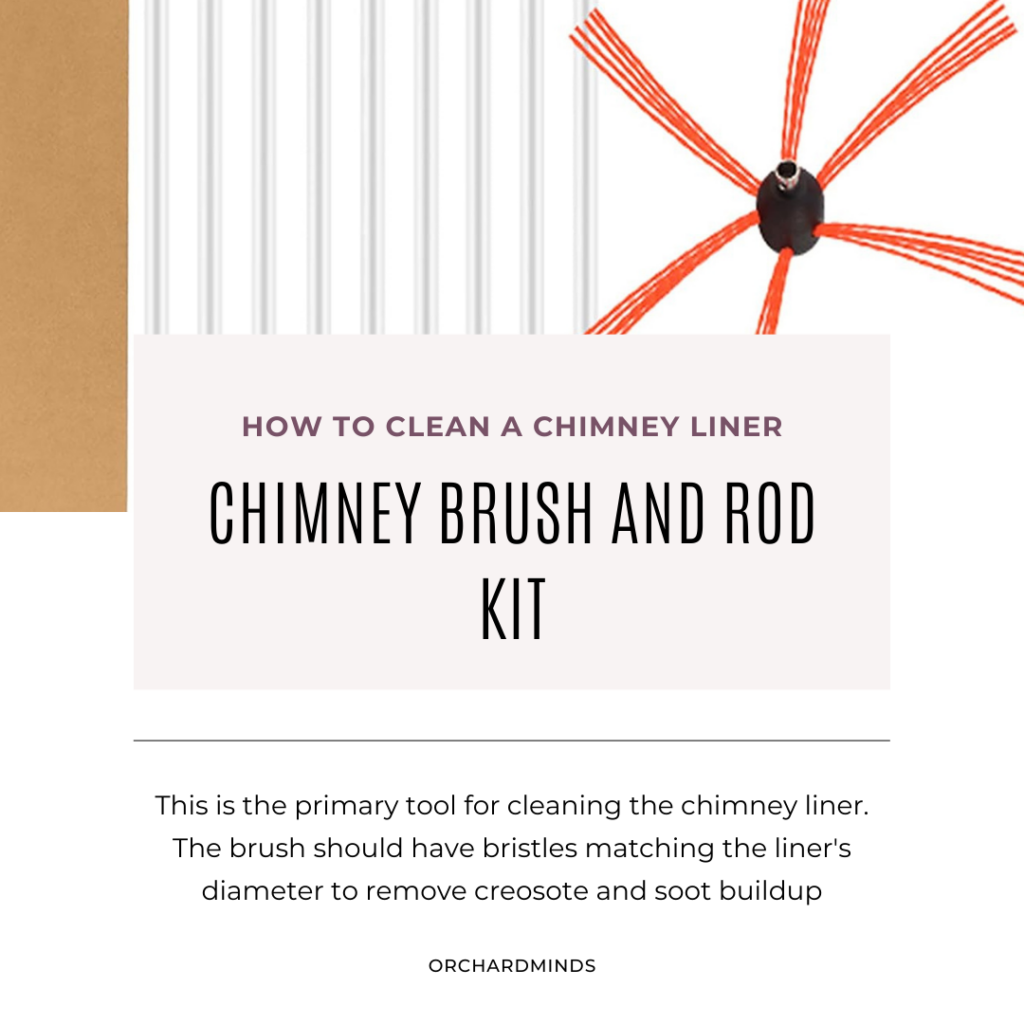
This is the primary tool for cleaning the chimney liner. The brush should have bristles matching the liner’s diameter to remove creosote and soot buildup. The rods are used to extend the brush’s reach down the chimney.
Drop Cloths or Plastic Sheets for cleaning chimney liner
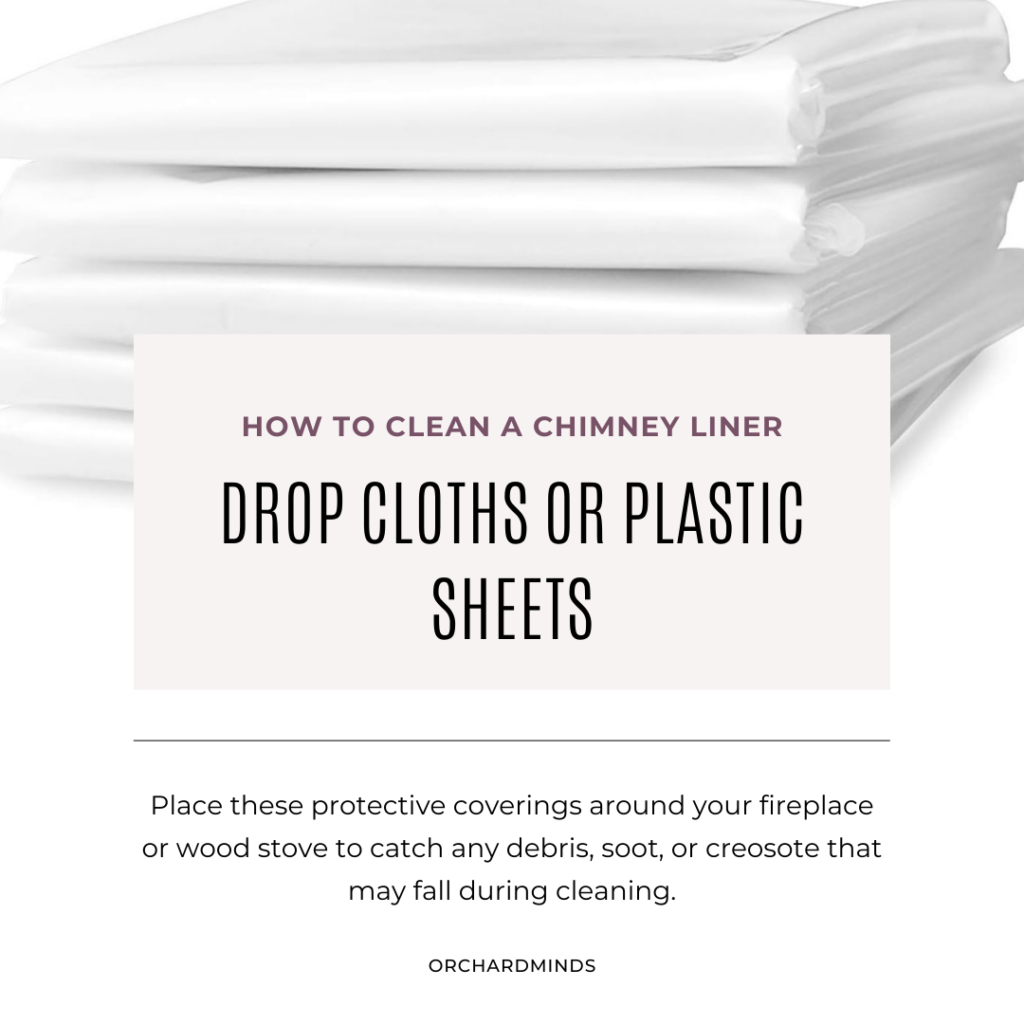
Place these protective coverings around your fireplace or wood stove to catch any debris, soot, or creosote that may fall during cleaning. They prevent mess and make cleanup easier.
Safety Goggles and a Dust Mask for cleaning Chimney Liner
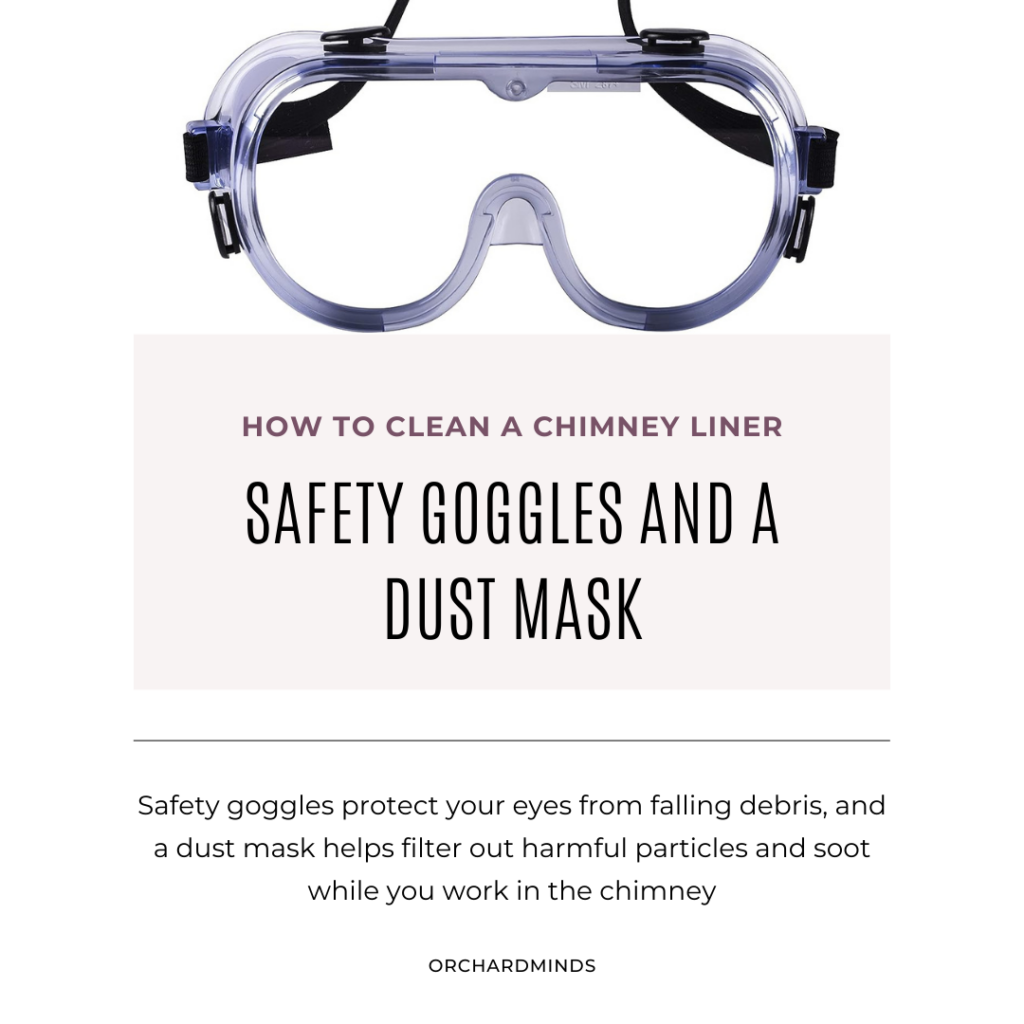
Safety goggles protect your eyes from falling debris, and a dust mask helps filter out harmful particles and soot while you work in the chimney. Safety is a top priority when cleaning.
Flashlight: A flashlight is essential for visibility inside the chimney liner. It helps you monitor your progress and ensure that the brush reaches the bottom of the chimney effectively.
Cleaning Solution (Optional): Some people choose to use a specialized chimney cleaning solution to help break down creosote buildup. If you opt for this, follow the manufacturer’s instructions carefully.
Bucket and Scrub Brush: These items are handy for collecting and disposing of the loosened creosote and soot. A scrub brush can help clean the area around the fireplace or wood stove.
Gloves: Wear sturdy gloves to protect your hands while handling dirty tools and materials. Chimney cleaning can be messy, and gloves help keep your hands clean and safe.
Ladder: A stable ladder is essential for safely accessing the chimney’s top. Make sure it’s positioned securely before climbing to the roof.
How to Clean a Chimney Liner?
Cleaning a chimney liner is vital to maintaining a safe and efficient fireplace or wood stove. To begin, gather essential tools like a chimney brush and rod kit (with the brush slightly larger than the liner’s diameter), safety gear including goggles and a dust mask, drop cloths or plastic sheets to protect the area, a flashlight for visibility, and optionally, a cleaning solution.
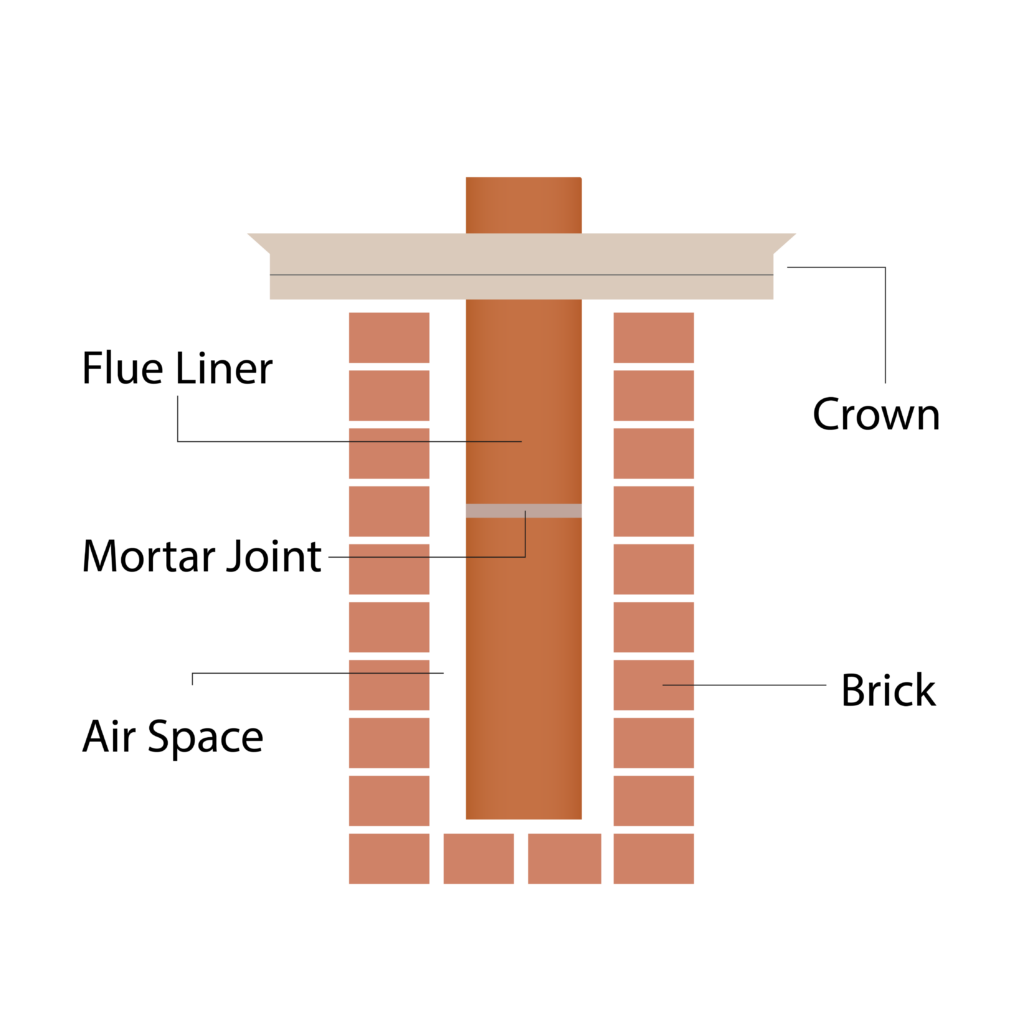
First, prepare the area, ensuring proper ventilation and securing a ladder for roof access. Next, insert the brush into the liner, lower it to the bottom using the rod, and gently scrub the interior, removing creosote and soot buildup. Carefully pull the brush back up, repeating the process if necessary. Properly dispose of debris, inspect the liner for damage, and schedule annual inspections for continued safety and efficiency. Regular chimney liner cleaning ensures your heating system functions optimally while reducing fire hazards.
Prepare the Area
Safety should always be your top priority when cleaning a chimney liner.
1. Safety First: Safety should be your foremost concern when dealing with chimney cleaning. The debris, soot, and creosote accumulating in the chimney liner may contain harmful substances and pose a fire hazard. You create a protective barrier on the floor and nearby surfaces by laying down drop cloths or plastic sheets. This prevents these substances from spreading, making the cleanup process much more manageable.
2. Containment: The drop cloths or plastic sheets act as a containment zone for any debris dislodged during the cleaning process. This containment helps you avoid damage to your flooring, furniture, or any other items near the fireplace or wood stove.
3. Ventilation: Adequate ventilation is essential during chimney cleaning. The process can generate dust and fumes, which may be irritating or harmful if inhaled. By opening windows or using fans, you ensure proper airflow, which helps dissipate these particles and maintain a healthier indoor environment.
4. Protecting Furnishings: Besides protecting your floors, consider covering any furniture or valuable items near the fireplace or wood stove. This extra precaution prevents these items from collecting dust or soot during cleaning.
5. Easier Cleanup: One of the most significant benefits of laying down protective coverings is that it simplifies the cleanup afterward. Once you’ve finished cleaning the chimney liner, you can fold up the drop cloths or sheets containing all the debris and dispose of it properly. This minimizes the cleaning required in the rest of your living space.
Inspect and Assemble the Chimney Brush
Before getting on the roof, inspect your chimney brush and rod kit to ensure they’re in good condition. Attach the brush head to the rod securely, ensuring it’s slightly larger than the liner’s diameter for effective cleaning.
Begin Cleaning the Chimney Liner
With all preparations in place, you can start cleaning the chimney liner:
- Ascend the roof: Carefully climb the ladder to access the chimney’s top, ensuring the ladder is stable and properly positioned.
- Insert the brush into the liner: Lower the brush attached to the rod down the chimney liner, using a flashlight to monitor your progress and ensure it reaches the bottom.
- Scrub the liner: Using a firm yet gentle back-and-forth motion, scrub the interior of the chimney liner. The brush will dislodge creosote and soot buildup.
- Remove the brush: Carefully pull the brush back up the liner using the rod, being cautious not to scrape against the liner walls to avoid damage.
- Repeat if necessary: Depending on the level of buildup, you may need to repeat the scrubbing process a few times until the liner is clean.
Clean Up and Maintenance
After completing the cleaning process, follow these essential steps:
- Dispose of debris: Collect the loosened creosote and soot in a bucket, seal it, and dispose of it according to local regulations.
- Inspect for damage: Examine the chimney liner for any signs of damage, such as cracks or corrosion. Address any issues promptly to ensure safe operation.
- Schedule annual inspections: To prevent excessive buildup and ensure ongoing safety, schedule an annual chimney inspection by a certified professional.
Cleaning a chimney liner is a necessary maintenance task to guarantee the safety and efficiency of your heating system. Following this step-by-step guide, you can clean your chimney liner effectively, reducing the risk of fire hazards while enjoying a cozy and warm home. Always prioritize safety, and don’t hesitate to seek professional assistance if you encounter difficulties or extensive damage during the cleaning process. Regular maintenance ensures your chimney and fireplace remain a source of comfort and warmth for years.

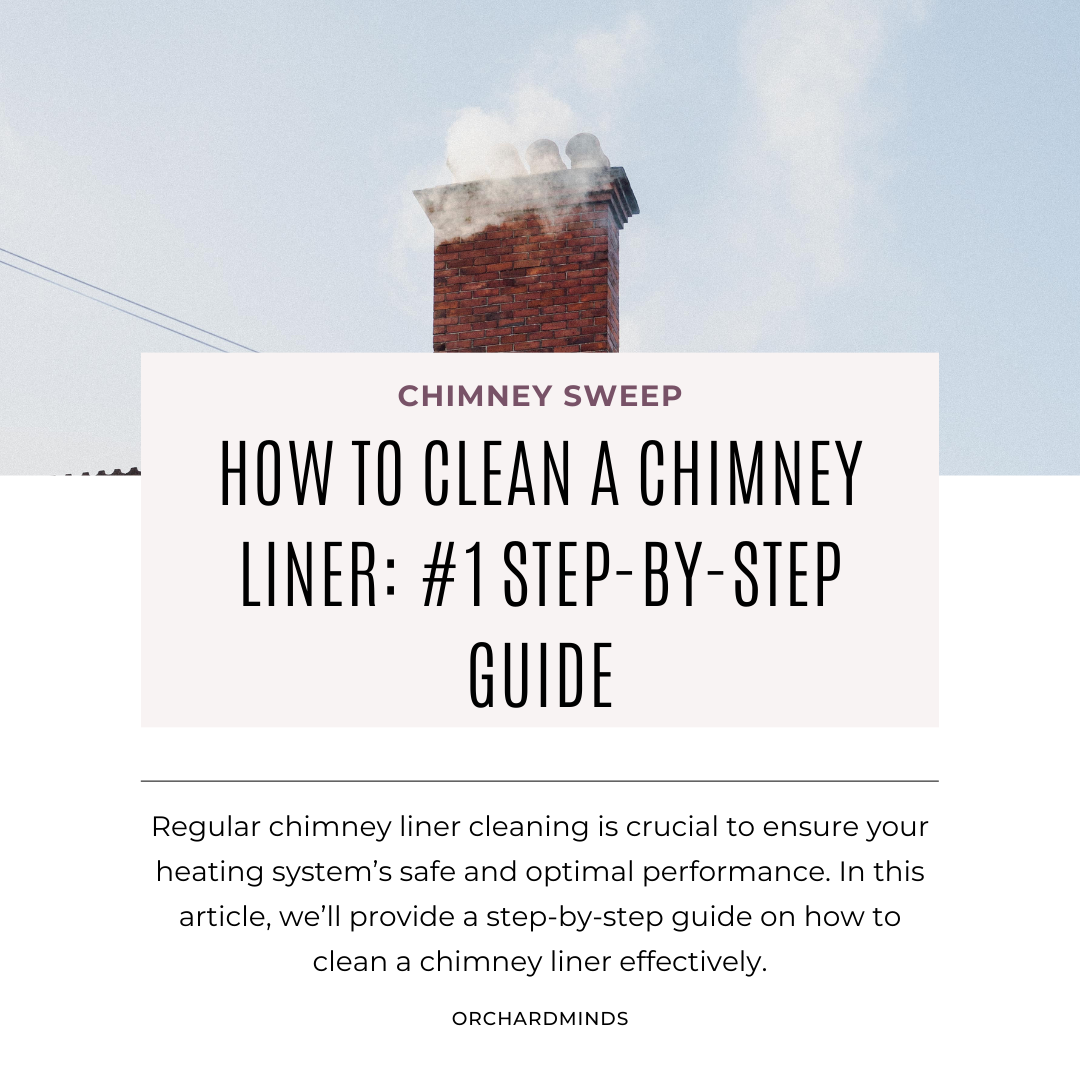
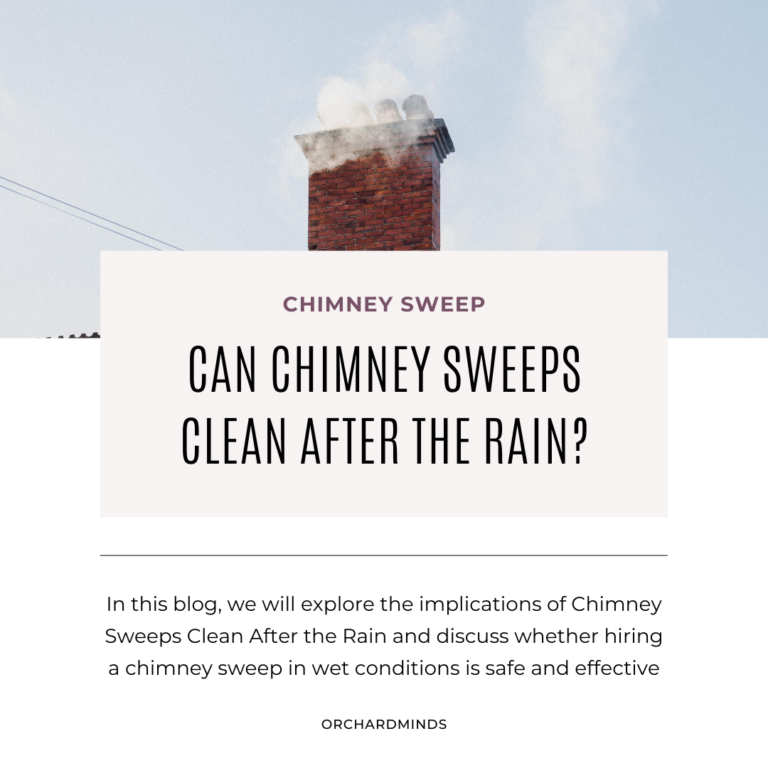

3 Comments